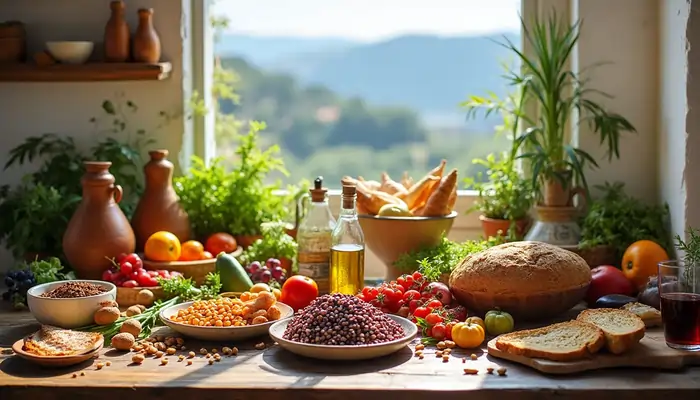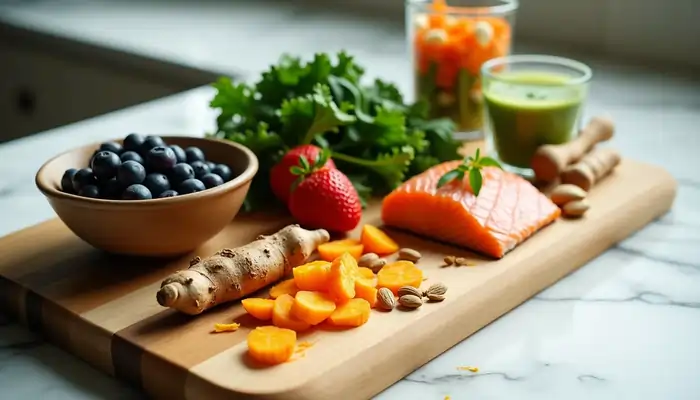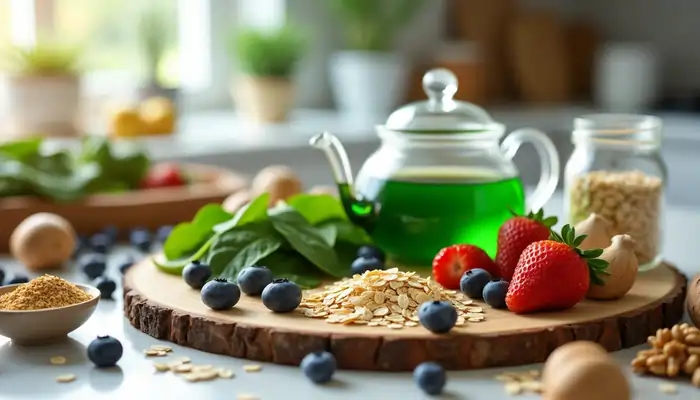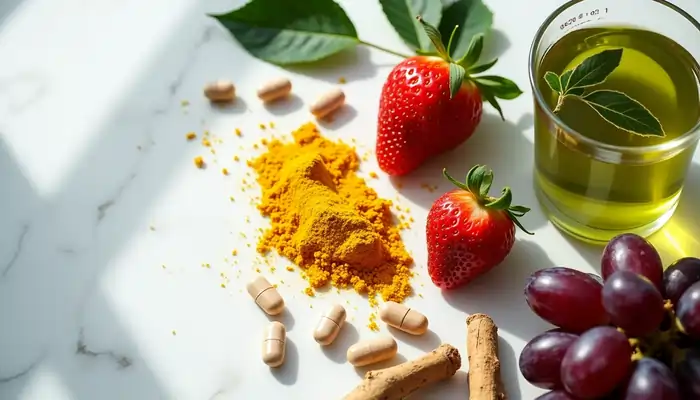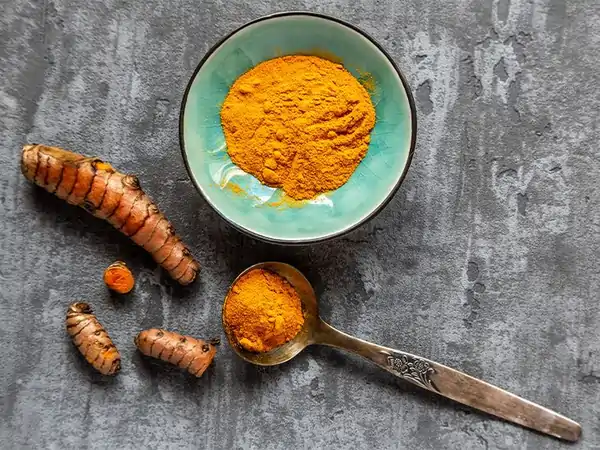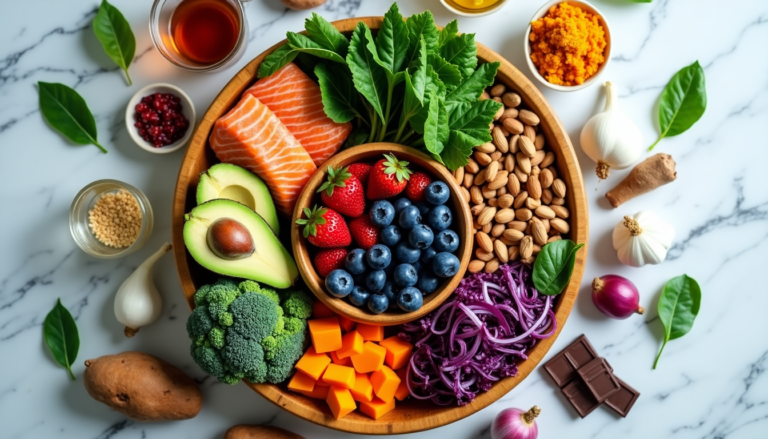The Anti-Inflammatory Diet Plan: Guide to Natural Healing
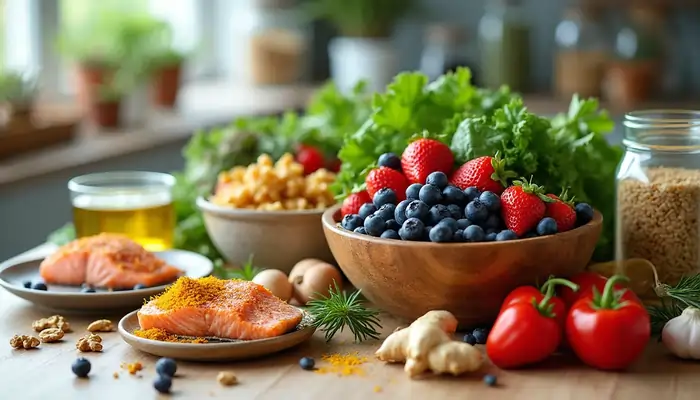
Our body’s inflammatory response depends on what we eat. Research reveals that ultra-processed foods can change gut bacteria and trigger inflammatory genes. Foods rich in antioxidants and omega-3s help curb inflammation naturally. Scientists have identified “inflammaging”—our body’s increased inflammation as we age—which raises health condition risks and makes dietary changes even more significant.
The solution is simpler than you might think. You don’t need to follow just one approach to an anti-inflammatory diet. Adding various anti-inflammatory foods like in the Mediterranean diet can reduce joint pain and improve gut health. These changes also lower your risk of chronic diseases. This piece offers a detailed guide to help you understand inflammation, identify anti-inflammatory foods, and create a practical meal plan that works for beginners.
What is inflammation and why it matters
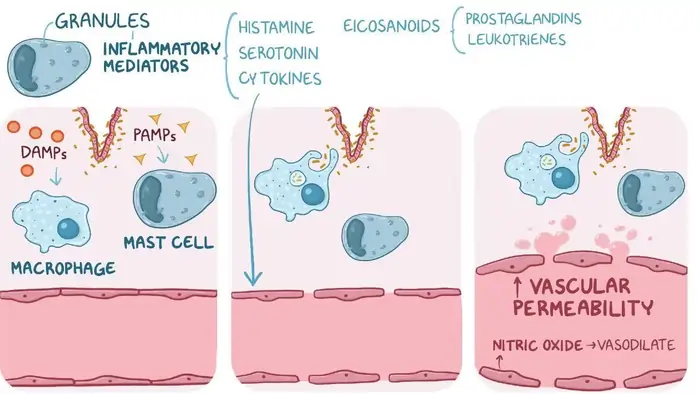
Image Source: Osmosis
Your body defends itself through inflammation. This natural mechanism kicks in when you get hurt, catch an infection, or come in contact with harmful substances. It works like your immune system’s emergency response team that rushes to protect and heal damaged tissues. The difference between normal and harmful inflammation plays a vital role in planning an anti inflammatory diet.
Acute vs. chronic inflammation
Acute inflammation helps your body heal. A cut finger or common cold triggers white blood cells to fight infection and repair damage at the affected area [1]. You’ll notice redness, swelling, heat, and pain that goes away in a few days [2].
“Some inflammation is good. Too much is often bad,” explains Dr. Robert H. Shmerling of Harvard Medical School [3]. “The goal is to recognize when inflammation is simply doing its job, and when it can potentially cause problems.”
Chronic inflammation tells a different story. Your immune system stays active for months or years in this persistent state [2]. Research shows that 125 million Americans lived with chronic inflammatory conditions in 2000. By 2014, almost 60% of Americans had at least one chronic condition [2].
Your immune system gets stuck in “attack mode” during chronic inflammation and sometimes targets healthy tissues. This happens when:
- Your body can’t clear the original threat
- Your immune system sees threats that don’t exist
- Poor diet, obesity, stress, or lack of sleep keep inflammation active [4]
The inflammation spectrum works like a car’s dashboard warning light – it shows something needs attention [3]. The light turns on briefly during repairs in acute inflammation. The warning light stays on indefinitely with chronic inflammation and might cause damage.
How inflammation affects long-term health
Scientists have changed their view on inflammation. They now know it plays vital roles in keeping us healthy, not just as a negative side effect [5]. Chronic inflammation links to many serious conditions when it persists.
Chronic inflammation plays a big role in 8 of the top 10 leading causes of death in the United States [6]. These include:
- Cardiovascular disease
- Cancer
- Alzheimer’s disease
- Diabetes
- Autoimmune disorders like rheumatoid arthritis
- Gastrointestinal conditions including Crohn’s disease
- Respiratory diseases such as asthma
- Depression and anxiety [5][4]
Chronic inflammation also causes “inflammaging” – a mild, ongoing inflammatory state that grows with age [5]. Unlike acute inflammation’s targeted response, inflammaging creates background inflammation that slowly damages body tissues.
“Inflammaging is a sort of chronic, nagging inflammatory response that doesn’t fight anything. Instead, it builds up over time, damaging tissues,” explains immunologist Goodridge [5]. This speeds up aging and age-related diseases.
The dual nature of inflammation explains why anti inflammatory diets focus on foods that support healthy immune function while reducing chronic inflammation triggers. Many doctors now suggest anti inflammatory foods to treat and prevent inflammatory conditions.
Research shows that diets rich in antioxidants and omega-3 fatty acids help control inflammatory processes [4]. These nutrients neutralize inflammatory compounds and support balanced immune function. The life-blood of any good anti inflammatory diet meal plan includes cutting back on foods that promote inflammation.
Scientists continue to study the links between inflammation, diet, and disease. The evidence shows that what we eat can affect inflammatory markers throughout the body. This offers a practical way to address the mechanisms rather than just symptoms of inflammatory conditions.
The science behind the anti-inflammatory diet Plan
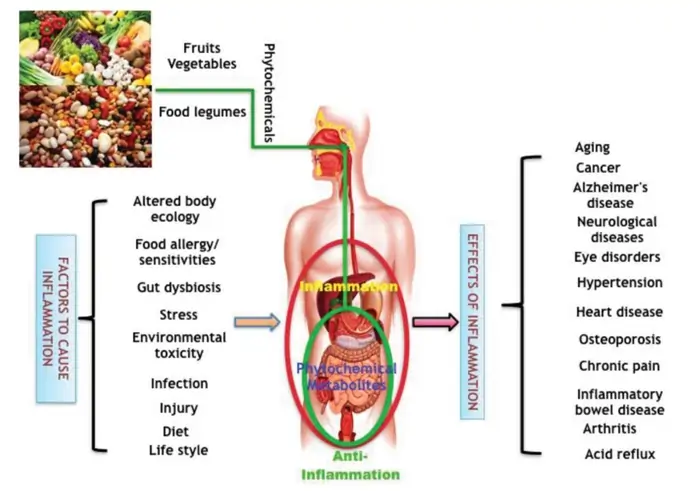
Image Source: Neolife
The science behind anti-inflammatory diet plans shows how food affects our body’s complex biochemical processes. Research now proves that our food choices directly affect inflammation at the cellular level. This creates a path to natural healing through what we eat.
What makes a food anti-inflammatory?
Anti-inflammatory diets focus on whole foods that are biodiverse and minimally processed [7]. These diets reduce inflammation by using foods rich in bioactive components that work together. They share some basic elements:
- High proportions of fruits and vegetables (1-2 servings of each at every meal)
- Emphasis on whole grains and unsaturated fats like olive oil
- Protein mainly from legumes and lean sources such as fish
- Limited consumption of red meat (once every 1-2 weeks)
- Minimal intake of processed foods [7]
Regular diets can trigger inflammatory cascades and increase inflammatory markers like cytokines [7]. Anti-inflammatory eating patterns support immune balance instead. These diets keep a lower glycemic index and reduce inflammation by decreasing insulin production—a powerful cellular mitogen that links to tumor development [7].
There’s another reason involving phytosterols found in foods like pistachios, avocados, and broccoli. These compounds limit intestinal absorption of dietary cholesterol and block inflammatory pathways [7]. People who follow traditional Mediterranean and similar diets show lower levels of inflammatory markers compared to those eating Western-style diets [7].
Role of antioxidants and omega-3s
Your body uses antioxidants to defend against free radicals—unstable molecules that damage cells and cause inflammation. Oxidative stress happens when free radicals overpower natural antioxidant defenses, which links to many inflammatory diseases [8].
Plant compounds like flavonoids, chromones and coumarins in fruits, vegetables and medicinal plants are powerful antioxidants [9]. These compounds:
- Neutralize harmful free radicals
- Prevent formation of reactive oxygen species
- Support cellular repair mechanisms
- Reduce pro-inflammatory signaling [9]
Fatty fish contain omega-3 fatty acids, especially EPA (eicosapentaenoic acid) and DHA (docosahexaenoic acid), which play crucial roles in managing inflammation. These essential fats reduce inflammation through several ways:
“Omega-3 fatty acids affect inflammation through various pathways, including altering cell membrane composition, inhibiting pro-inflammatory NF-κB signaling, and activating anti-inflammatory transcription factors” [7].
EPA and DHA work differently against chronic inflammation. DHA shows stronger anti-inflammatory effects by lowering the genetic expression of four types of pro-inflammatory proteins. EPA improves the balance between pro- and anti-inflammatory proteins [10].
Studies consistently show that higher omega-3 intake links to decreased illness and death rates in many conditions [11]. Just 200 milligrams of DHA daily can cut the risk of death from cardiac arrest by half [11].
Understanding ‘inflammaging’
‘Inflammaging’ refers to chronic, low-grade inflammation that comes with aging and contributes to age-related diseases [3]. Unlike temporary inflammation that helps healing, inflammaging is a constant inflammatory state that exists without infection.
This idea explains why diet becomes more important as we age. People who live to be centenarians usually have strong anti-inflammatory networks that protect them from harmful inflammatory increases [3].
“Inflammaging is neither harmful nor beneficial per se, but evolutionarily may be beneficial in an adaptive manner or harmful in a maladaptive manner depending on the genetic and environmental background” [3].
Several factors lead to inflammaging:
- Senescent cells that accumulate with age and secrete inflammatory compounds
- Decline in autophagy capacity (cellular housekeeping)
- Impaired intestinal barrier function
- Chronic stress and physical inactivity [3]
An anti-inflammatory diet becomes more valuable as you age. Bioactive compounds in anti-inflammatory foods work together to control immune function and reduce inflammatory signals. This protects against chronic diseases linked to inflammaging [7].
The science shows that starting an anti-inflammatory diet isn’t just about feeling better—it addresses the basic biological processes that drive both inflammation and aging.
Top anti-inflammatory foods to include
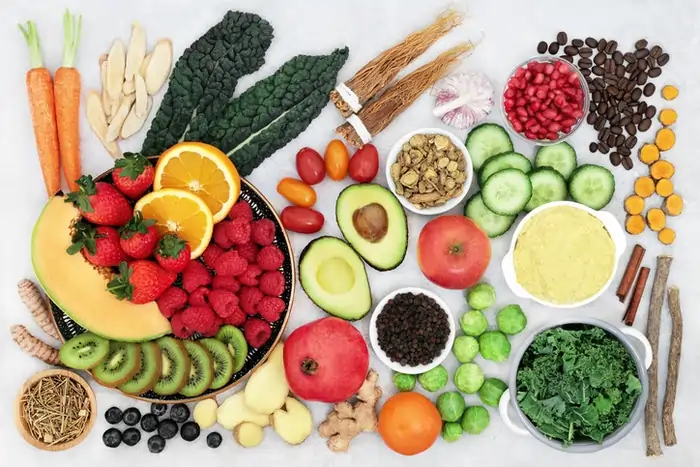
Image Source: Harvard Health
Building an anti-inflammatory diet plan that works starts with knowing which foods should be on your plate. The right food choices can reduce inflammatory markers in your body by a lot and give you essential nutrients for better health.
Fruits and vegetables
Colorful fruits and vegetables are the life-blood of any anti-inflammatory diet for beginners. Berries—including strawberries, blueberries, raspberries, and blackberries—pack powerful antioxidants called anthocyanins that help reduce inflammation [2]. These compounds link to lower risks of heart disease, Alzheimer’s disease, and diabetes [2].
Leafy green vegetables like spinach give you vitamin E, which shields your body from inflammatory compounds called cytokines [12]. Cruciferous vegetables such as broccoli, cauliflower, and Brussels sprouts have sulforaphane, an antioxidant that helps decrease inflammation [13].
Your inflammation-fighting produce should include:
- Avocados (rich in monounsaturated fats and carotenoids) [2]
- Tomatoes (contain lycopene that helps reduce IL-6, an inflammatory protein) [1]
- Bell peppers (loaded with vitamin C and quercetin) [2]
- Citrus fruits (high in vitamin C, flavonoids, and carotenoids) [2]
Whole grains and legumes
Whole grains pack more nutrients and dietary fiber than refined alternatives, making them perfect additions to your anti-inflammatory meal plan [14]. You can measure their anti-inflammatory effects through markers like C-reactive protein (CRP), interleukin-6 (IL-6), and tumor necrosis factors (TNF) [14].
Farro stands out among whole grains to fight inflammation. A quarter cup uncooked gives you 5 grams of fiber and antioxidants like carotenoids and tocotrienols [15]. A newer study, published in 2022 by researchers found that cereal fiber from whole grains linked to much lower markers of inflammation than fiber from fruits or vegetables [15].
Brown rice, quinoa (which might suppress pro-inflammatory proteins called cytokines), and barley offer similar benefits [16]. Beans and lentils help improve your diet’s fiber content and support gut health while reducing inflammation [17].
Healthy fats and oils
Fatty fish—specifically salmon, sardines, mackerel, and tuna—give you omega-3 fatty acids that fight inflammation [2]. These essential fats help lower your risk of cardiovascular disease, and studies show they reduce C-reactive protein, an inflammatory marker in your blood [1].
Olive oil, the life-blood of Mediterranean-style eating, has monounsaturated fats that protect against heart disease by reducing inflammatory markers like interleukin-6 [6]. Research analyzing 30 studies found that eating olive oil daily (between 1-50 mg) lowered C-reactive protein and interleukin-6 levels [6].
Nuts and seeds provide extra healthy fats and keep your gut bacteria healthy, which helps reduce brain inflammation [1]. Walnuts, flaxseeds, chia seeds, and hemp seeds work especially well since they have omega-3 fatty acids [1].
Herbs and spices
Herbs and spices pack powerful anti-inflammatory compounds in small amounts. Turmeric has curcumin, which blocks inflammatory pathways in your body [5]. Research shows curcumin supplements can ease pain as well as common NSAIDs like ibuprofen [5].
Ginger contains over 100 active compounds, including gingerol and shogaol, that reduce inflammation [5]. Scientists analyzed 16 studies and found taking 1,000-3,000 mg of ginger daily for 4-12 weeks reduced inflammatory markers by a lot compared to placebo [5].
Garlic has sulfur compounds with anti-inflammatory properties [5]. A review of 17 high-quality studies showed people taking garlic supplements had much lower blood levels of inflammatory markers [5]. Cinnamon, cardamom, and black pepper offer similar benefits [5].
Fermented foods
Foods rich in fermentation help improve gut microbe diversity and lower molecular signs of inflammation [18]. Yogurt, kefir, kimchi, sauerkraut, and kombucha add beneficial probiotics that support gut health.
These foods have live microorganisms that can blend into your microbiota and boost its diversity [4]. Stanford researchers found that eating fermented foods lowered levels of 19 inflammatory proteins, including interleukin 6, which links to conditions like rheumatoid arthritis and diabetes [18].
Fermentation creates postbiotics—bioactive compounds that positively affect physiological parameters [4]. Research suggests fermented foods might help your microbiota and inflammation more than a high-fiber diet [4].
Foods to avoid on an inflammation diet
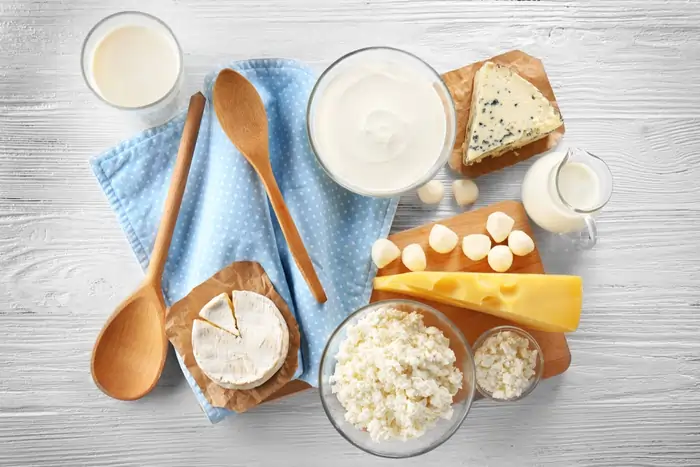
Image Source: MamaSezz
Knowing what foods to eat is just half the battle. You also need to understand which foods to avoid in your anti-inflammatory diet plan. Some foods can trigger inflammatory responses that work against your efforts to reduce inflammation naturally.
Ultra-processed foods
Ultra-processed foods (UPFs) are industrial formulations that contain five or more ingredients. They often include additives, sugars, oils, fats, salt, and preservatives [19]. These ready-to-eat products typically lack dietary fiber that’s vital for digestive and microbiota health [20].
Research shows that UPFs make up about 58% of caloric intake and 90% of added sugars in the United States [21]. This high consumption is linked to increased inflammation markers. A French study that tracked 105,000 adults over five years found something interesting. People who ate the most UPFs had a 28% higher risk of developing cardiovascular disease compared to those who ate the least [21].
UPFs promote inflammation through several mechanisms:
- They disrupt gut microbiome balance [20]
- They reduce beneficial bacteria with anti-inflammatory properties [20]
- They increase intestinal permeability (“leaky gut”) [20]
- They decrease production of protective short-chain fatty acids [20]
Refined sugars and flours
Americans consume about 17 teaspoons of added sugar each day [22]. This is nowhere near what the American Heart Association recommends – no more than 6 teaspoons (24 grams) for women and 9 teaspoons (36 grams) for men [23].
Research paints a clear picture of sugar’s effects. A study of 29 healthy people revealed something concerning. Just one can of soda daily (40 grams of added sugar) for three weeks led to increased inflammatory markers, higher fasting glucose, and worse LDL cholesterol [24]. On top of that, young and healthy participants in another study showed increases in an inflammatory marker called Nf-kB after eating just 50 grams of refined carbs in white bread [24].
You’ll find hidden sources of added sugar in:
- Bread and crackers
- Granola bars and cereals
- Salad dressings and sauces
- Yogurt and flavored drinks [22]
Refined carbohydrates like white pasta, rice, and bread cause quick blood sugar spikes and crashes. A 2024 study suggests that people who eat more refined carbs and less fiber face higher risks of inflammation-related heart disease compared to those who eat fiber-rich carbohydrates [25].
Trans fats and seed oils
Trans fats form when manufacturers add hydrogen to vegetable oil, making it solid at room temperature [9]. Experts consider these “the worst type of fat to eat” because they raise “bad” LDL cholesterol while lowering “good” HDL cholesterol [9].
Products with partially hydrogenated oils likely contain trans fats. This is true even if the label claims “0 grams trans fat” (which is allowed if there’s less than 0.5 grams per serving) [9]. A 2021 study in Frontiers in Immunology suggests that trans fats create more harmful inflammatory reactions than saturated fats [25].
The verdict on seed oils isn’t as clear. Some experts say they cause inflammation, while others suggest the real culprit might be the ultra-processed foods they’re usually found in [8].
Excess alcohol and additives
Alcohol triggers inflammation through multiple pathways, even in moderate amounts. Your body produces harmful byproducts as it breaks down alcohol, including acetaldehyde, cytokines, chemokines, and reactive oxygen species [26].
Research shows how alcohol disrupts gut health. It reduces anti-inflammatory bacteria like Bacteroidetes and Firmicutes while increasing inflammatory bacteria like Proteobacteria [26]. Long-term alcohol use can damage the gut barrier, letting toxins enter the bloodstream and trigger inflammatory responses [27].
The Dietary Guidelines for Americans doesn’t recommend drinking alcohol at all. If you choose to drink, men should stick to two drinks or less daily, and women to one drink or less [28]. Some people who are sensitive to inflammation might need to avoid alcohol completely.
How to start an anti-inflammatory diet for beginners
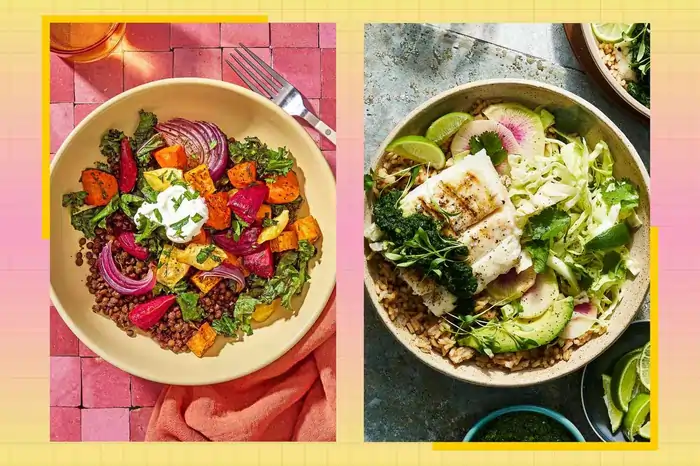
Image Source: EatingWell
You don’t need to change your eating habits overnight to start an anti-inflammatory diet. Most experts suggest making smaller changes over time because complete dietary changes are hard to maintain [11]. Learning how to make these changes step by step will help you create green practices that naturally curb inflammation.
Start with small swaps
Simple substitutions are the easiest way to begin an anti-inflammatory diet. These small changes will add up to better health over time [11]. Here are some proven swaps you can try:
- Replace white bread with whole grain alternatives to boost healthy gut bacteria [11]
- Use olive oil instead of butter to get anti-inflammatory benefits [11]
- Pick water with fresh fruit instead of soda, or try green tea which has inflammation-fighting catechins [11]
- Choose salmon over steak to increase omega-3 fatty acids [11]
- Mix white and brown rice at first, then slowly switch to all brown rice [10]
Remember, you’re aiming for progress, not perfection. Leave room for occasional treats while focusing on anti-inflammatory foods most of the time [29].
Plan balanced meals
A working anti-inflammatory diet plan should fill half your plate with colorful vegetables, one quarter with whole grains, and the rest with lean protein [10]. Adding variety ensures you get different nutrients that fight inflammation through multiple pathways.
A balanced anti-inflammatory meal typically has:
Fresh fruits and vegetables (especially berries and dark leafy greens) packed with powerful antioxidants [30]
Whole grains like oatmeal, quinoa, and brown rice that provide vital fiber [30]
Healthy fats from olive oil, avocados, and nuts that help control inflammatory responses [30]
Fish rich in omega-3s, particularly salmon, that directly fights inflammation [30]
Adding anti-inflammatory herbs and spices like turmeric, ginger, and garlic can boost your meal’s healing properties [31].
Read food labels carefully
Hidden inflammatory ingredients lurk in many processed foods under different names. Reading nutrition labels is vital when following an anti-inflammatory diet [3].
Look at the first three ingredients since they make up most of what you’re eating [3]. The product likely causes inflammation if you see refined grains, sugars, or hydrogenated oils among these original ingredients [3].
Serving sizes often mislead consumers by being unrealistically small [3]. A product might claim zero grams of trans fat but still list “partially hydrogenated oil” in its ingredients—showing it has small amounts of this inflammatory substance [3].
Sugar hides behind many names—experts estimate over 50 different terms exist for added sugar in processed foods [32]. Words ending in “ose” (like fructose or dextrose) usually mean sugar [32].
Sample 7-day anti-inflammatory diet meal plan
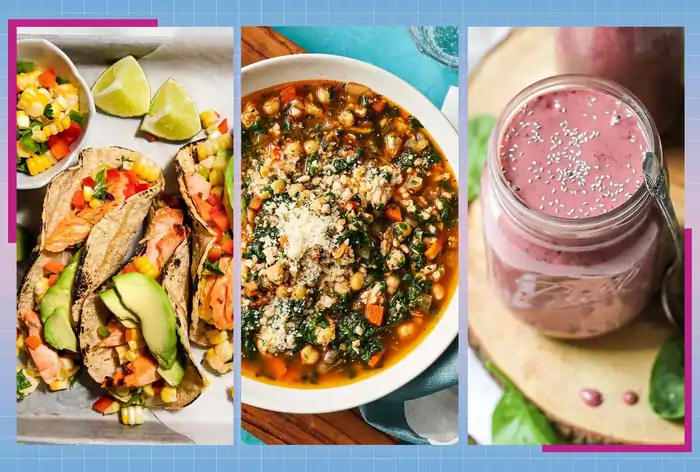
Image Source: EatingWell
This 7-day anti-inflammatory diet meal plan helps you add healing foods to your daily meals. The nutrient-rich meals curb inflammation and taste great too.
Day 1: Smoothie, salmon, greens
Your day starts with a Really Green Smoothie that has kale, beets, and berries—powerful antioxidants that curb free radicals [33]. A protein-rich salad with mixed greens makes a perfect lunch. The dinner combines roasted salmon with smoky chickpeas and greens. The omega-3 fatty acids actively reduce inflammation [34].
Salmon delivers a powerful “trifecta” of anti-inflammatory nutrients: omega-3 fatty acids, vitamin D, and calcium that reduce joint inflammation [35].
Day 2: Oats, lentils, roasted veggies
The day begins with low-fat Greek yogurt topped with fresh cherries and chopped walnuts [7]. A protein-rich savory oatmeal with red lentils makes a hearty lunch. Each bowl provides 12g of protein and digests better than other legumes [36]. The dinner combines lentils with healing spices like turmeric, black pepper, and allspice [37].
Red lentils work great for people with digestive issues when paired with healing spices like ginger, turmeric, and cumin [36].
Day 3: Chia pudding, chicken, broccoli
Strawberry chia pudding kicks off your morning by combining antioxidant-rich strawberries with fiber-packed chia seeds [2]. These seeds contain alpha-linolenic acid (ALA), an inflammation-fighting omega-3 fat that lowers harmful LDL cholesterol [2]. A simple chicken dish works for lunch, while dinner features broccoli rich in sulforaphane—an antioxidant that reduces inflammatory markers [13].
Day 4: Yogurt, beans, sweet potato
Greek yogurt topped with anti-inflammatory berries powers up your morning [7]. A hearty bean soup satisfies at lunch—beans deliver fiber, phytonutrients, and antioxidants that curb inflammation [38]. Sweet potatoes paired with coconut stew and spinach create a nutrient-packed dinner [39].
Day 5: Eggs, quinoa, leafy greens
Protein-rich eggs fuel your morning. A quinoa and avocado chickpea salad over mixed greens provides complete plant-based protein and essential amino acids at lunch [40]. Each cooked cup of quinoa packs 8 grams of protein [41]. Leafy greens at dinner supply vitamin K that reduces inflammatory proteins in the blood [38].
Day 6: Tofu, brown rice, cabbage
A green smoothie energizes your morning [7]. Vegan lentil soup makes a filling lunch [7]. The dinner features a vibrant tofu and veggie stir-fry with brown rice. This balanced plant-based meal delivers protein-rich tofu with anti-inflammatory vegetables [17]. Cabbage helps curb inflammation through its high fiber content [39].
Day 7: Baked fish, kale, berries
A green smoothie with kale and berries starts your day [7]. Leftover lentil soup works perfectly for lunch [7]. Provençal baked fish with roasted potatoes and mushrooms alongside mixed greens creates a satisfying dinner [7]. Mixed berries provide an antioxidant boost with their inflammation-reducing anthocyanins [13].
Lifestyle habits that support natural healing
Your diet is the foundation of an anti-inflammatory plan, but your lifestyle choices play a vital role in reducing inflammation throughout your body. We found that certain daily habits can increase or decrease inflammatory responses no matter what you eat.
Exercise and movement
Your body creates powerful anti-inflammatory effects when you exercise regularly. Studies show exercise lowers levels of inflammatory markers like C-reactive protein (CRP) and supports your body’s natural healing processes [14]. You should get 30-45 minutes of aerobic exercise plus 10-25 minutes of strength training at least four times weekly [16].
A single 20-minute moderate workout can trigger temporary anti-inflammatory responses [15]. These benefits become more consistent when you exercise regularly, which helps keep chronic inflammation away over time.
Exercise reduces inflammatory-promoting body fat, boosts anti-inflammatory hormone production, and blocks pro-inflammatory signaling pathways [42]. The best results come when you find activities you truly enjoy, so exercise feels more like fun than work [43].
Sleep and circadian rhythm
Your body’s internal clock affects inflammatory responses directly. Bad sleep patterns increase inflammatory markers while good sleep helps regulate immune function [44]. Just one night of poor sleep can trigger inflammation by increasing inflammatory substances in your blood [1].
Studies show that disrupting your circadian rhythm throws off immune responses, which can further mess up your body clock in a negative cycle [44]. This explains why people who work night shifts often show higher inflammatory markers [6].
Stress management techniques
Stress contributes by a lot to inflammation in many chronic conditions [45]. People who practice mindfulness meditation show reduced stress hormones and lower inflammatory markers like C-reactive protein [43].
Long-time meditators show lower stress responses and smaller neurogenic inflammatory reactions compared to non-meditators [45]. These techniques also work well:
- Deep breathing exercises (shown to lower inflammatory markers) [1]
- Yoga (calms your nervous system and reduces inflammation) [15]
- Regular short breaks (even 1-2 minute mental breaks help you feel better) [43]
Hydration and gut health
Good hydration is vital yet often overlooked in fighting inflammation. Research shows not drinking enough water disrupts gut balance and changes immune cell populations, especially Th17 cells that your immune system needs [46].
Not drinking enough water can cause constipation, increased gut microbiota, and weaker immune responses [46]. Water-rich fruits and vegetables help you stay hydrated while giving you anti-inflammatory nutrients [47].
Water doesn’t just help with fluid balance – it affects your entire inflammatory response system by influencing your gut microbiome diversity and intestinal secretions [48].
Common myths about the anti-inflammatory diet
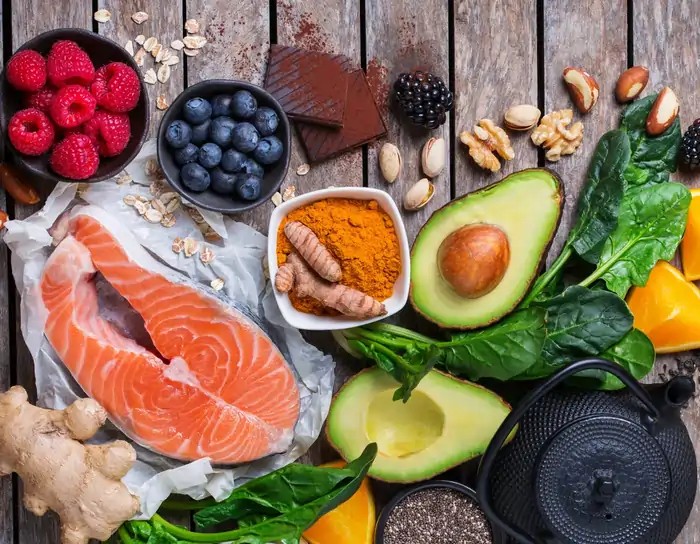
Image Source: The Nutrition Source – Harvard University
My patients often ask me about popular myths they see online when I head over to explain anti-inflammatory eating. Learning from scientific evidence instead of following trends is vital to create an anti-inflammatory diet plan that works.
Is it the same as a detox?
People often mix up anti-inflammatory diets with detox programs that promise quick results. I spend a lot of time in my practice explaining this key difference.
Anti-inflammatory eating isn’t about quick cleansing – it’s about green practices you can stick with. We focused on adding foods rich in nutrients that help reduce inflammation markers as time goes by.
“Even if you could completely eliminate inflammation (which is not possible) you wouldn’t want to. Quashing inflammation leaves you vulnerable to deadly infections” [5]. Your body needs some inflammation to heal and fight infections.
Do you need to go gluten-free?
Despite what many believe, “there is no compelling evidence that a gluten-free diet will improve health or prevent disease if you don’t have celiac disease and can eat gluten without trouble” [49].
The gluten-free trend picked up steam through several factors. People assumed that anything harmful to those with celiac disease must be bad for everyone. This logic doesn’t match the science.
The irony is that gluten-free products “are commonly less fortified with folic acid, iron, and other nutrients than regular foods containing gluten. And gluten-free foods tend to have less fiber and more sugar and fat” [49]. Whole grains with gluten can be part of an anti-inflammatory diet.
Is dairy always inflammatory?
Dairy’s relationship with inflammation shows “a contradictory landscape” [12]. The research suggests dairy has neutral or even anti-inflammatory effects.
“A 2017 review of 52 clinical studies concluded that dairy generally has anti-inflammatory effects, except in people allergic to cow’s milk” [50]. This matches findings that “dairy intake was associated with a weak anti-inflammatory effect” [51] in healthy adults.
Yogurt in particular “is associated with decreased inflammation, decreased insulin resistance and it may prevent type 2 diabetes” [50]. Scientists think probiotics create this benefit, but they need more research.
You can try an elimination diet if you worry about dairy’s effects on your body. Just remove dairy for a while, then add it back and see how you feel [50].
Conclusion
Final thoughts: Making anti-inflammatory eating a lifestyle
My years as a physician have shown me remarkable changes in patients who commit to an anti-inflammatory approach. Research proves that food choices affect inflammatory markers, disease progression, and overall health . The path to reduced inflammation doesn’t need perfection. Small, consistent changes create meaningful results.
People who stick to anti-inflammatory eating patterns see substantial improvements in just 4-6 weeks . The benefits go beyond inflammation markers. Patients experience better joint mobility, improved digestion, better sleep quality, and sharper cognitive function. Most patients notice the original improvements within 2-3 weeks, though bigger changes take more time [18].
Food becomes medicine once you understand how it works. The combination of dietary changes with proper sleep, stress management, and regular exercise creates effects that utilize your body’s natural healing abilities [4]. This all-encompassing approach works because it targets multiple inflammatory pathways at once.
Patients often ask about keeping this eating pattern long-term. My advice centers on sustainability rather than perfection. The 80/20 rule works well for most people. You want to make anti-inflammatory choices 80% of the time while staying flexible for special occasions [52]. This balance prevents stress and guilt that can trigger inflammation.
Patients also wonder about handling social situations with an anti-inflammatory approach. Good preparation helps a lot. You can eat a small anti-inflammatory snack before events, bring a compliant dish to share, or check menu options beforehand [53]. These strategies help you stick to your dietary goals without losing social connections.
Diet is just one piece of the anti-inflammatory puzzle. A complete strategy against chronic inflammation includes good sleep, physical activity, stress reduction, and environmental factors . Each element strengthens the others and creates positive momentum toward better health.
Scientific evidence for anti-inflammatory diets grows stronger each year. Without doubt, medical professionals recommend these approaches more often, not just for specific conditions but for general health . Traditional medicine often treats symptoms, while dietary changes address why it happens.
Your anti-inflammatory experience might differ from others. Tracking your symptoms, energy levels, and inflammatory markers helps identify your specific triggers and beneficial foods . This individual-specific approach works better than following generic plans.
Anti-inflammatory lifestyle ended up being one of our most powerful tools against chronic disease. Daily choices either fuel inflammation or fight it. This piece gives you tools to make informed decisions . Small, consistent steps toward anti-inflammatory eating create lasting habits that support lifelong health and vitality.
FAQs
What are some of the most effective anti-inflammatory foods?
Omega-3 rich fatty fish like salmon, colorful fruits and vegetables, nuts, seeds, olive oil, and spices like turmeric are among the most potent anti-inflammatory foods. These foods contain compounds that help reduce inflammation markers in the body.
How long does it take to see benefits from an anti-inflammatory diet?
Most people start noticing initial improvements within 2-3 weeks of following an anti-inflammatory diet. However, significant changes in inflammatory markers and overall health may take 4-6 weeks or longer of consistent dietary changes.
Is it necessary to completely eliminate certain food groups on an anti-inflammatory diet?
No, it’s not necessary to completely eliminate entire food groups. The anti-inflammatory diet focuses on increasing intake of nutrient-dense, anti-inflammatory foods while reducing consumption of processed and inflammatory foods. Moderation and balance are key.
Can exercise help reduce inflammation in the body?
Yes, regular physical activity has a powerful anti-inflammatory effect. Even a single 20-minute moderate workout can trigger temporary anti-inflammatory responses. Aim for a combination of aerobic exercise and strength training at least four times a week for optimal benefits.
Are there any lifestyle factors besides diet that can help reduce inflammation?
Yes, several lifestyle factors can significantly impact inflammation levels. Getting adequate sleep, managing stress through techniques like meditation or yoga, staying properly hydrated, and maintaining a healthy gut microbiome all play important roles in reducing chronic inflammation.
References
[1] – https://www.health.harvard.edu/staying-healthy/easy-ways-to-keep-inflammation-in-check
[2] – https://www.eatingwell.com/strawberry-chia-pudding-8756143
[3] – https://www.healthline.com/nutrition/how-to-read-food-labels
[4] – https://observatoireprevention.org/en/2024/09/04/the-anti-inflammatory-effects-of-fermented-foods/
[5] – https://www.health.harvard.edu/healthbeat/inflammation-myths-and-misconceptions
[6] – https://www.sciencedirect.com/science/article/abs/pii/S0009898120305337
[7] – https://www.eatingwell.com/article/7894310/anti-inflammatory-meal-plan-for-beginners/
[8] – https://scopeblog.stanford.edu/2025/03/13/5-things-to-know-about-the-effects-of-seed-oils-on-health/
[9] – https://www.mayoclinic.org/diseases-conditions/high-blood-cholesterol/in-depth/trans-fat/art-20046114
[10] – https://www.mayoclinichealthsystem.org/hometown-health/speaking-of-health/want-to-ease-chronic-inflammation
[11] – https://www.health.harvard.edu/blog/5-inflammation-fighting-food-swaps-2021051022570
[12] – https://www.tandfonline.com/doi/full/10.1080/10408398.2014.967385
[13] – https://www.healthline.com/nutrition/13-anti-inflammatory-foods
[14] – https://www.brighamandwomens.org/patients-and-families/meals-and-nutrition/bwh-nutrition-and-wellness-hub/special-topics/anti-inflammatory-lifestyle
[15] – https://www.nytimes.com/2025/03/19/well/move/inflammation-exercise.html
[16] – https://www.scripps.org/news_items/4232-six-keys-to-reducing-inflammation
[17] – https://www.dishgen.com/recipes/vibrant-tofu-and-veggie-stir-fry-with-brown-rice-mb5sjyun
[18] – https://med.stanford.edu/news/all-news/2021/07/fermented-food-diet-increases-microbiome-diversity-lowers-inflammation
[19] – https://pmc.ncbi.nlm.nih.gov/articles/PMC10058108/
[20] – https://www.news-medical.net/news/20250306/Eating-ultra-processed-foods-harms-your-gute28094heree28099s-how-inflammation-takes-hold.aspx
[21] – https://pmc.ncbi.nlm.nih.gov/articles/PMC10663139/
[22] – https://health.clevelandclinic.org/foods-that-can-cause-inflammation
[23] – https://www.health.harvard.edu/heart-health/the-sweet-danger-of-sugar
[24] – https://www.healthline.com/nutrition/sugar-and-inflammation
[25] – https://www.eatingwell.com/article/2052349/the-8-worst-foods-to-eat-for-inflammation/
[26] – https://www.eatingwell.com/alcohol-and-inflammation-8415778
[27] – https://westwindrecovery.com/recovery-blog/the-link-between-alcohol-and-inflammation/
[28] – https://www.healthline.com/nutrition/6-foods-that-cause-inflammation
[29] – https://www.deseret.com/23894271/anti-inflammatory-diet-foods/
[30] – https://www.eatingwell.com/article/7866186/30-day-anti-inflammatory-meal-plan/
[31] – https://www.healthline.com/health/rheumatoid-arthritis/seven-day-meal-plan
[32] – https://www.hopkinsmedicine.org/health/wellness-and-prevention/anti-inflammatory-diet
[33] – https://simplegreensmoothies.com/anti-inflammatory-smoothie-recipe/
[34] – https://www.eatingwell.com/recipe/262763/roasted-salmon-with-smoky-chickpeas-greens/
[35] – https://6abc.com/main-line-health-anti-inflammatory-diet-healthy-eating-recipes-salmon-cakes-with-yogurt-sauce/14610627/
[36] – https://www.bitsofwellness.com/blog/anti-inflammatory-and-easy-to-digest-basic-red-lentil-stew
[37] – https://cookingforpeanuts.com/high-protein-savory-oatmeal/
[38] – https://thenutritionadventure.com/anti-inflammatory-foods-20-recipes-to-reduce-inflammation/
[39] – https://www.eatingwell.com/anti-inflammatory-dinner-recipes-that-arent-salmon-8600859
[40] – https://cih.ucsd.edu/nutrition/recipes/kale-and-quinoa-superfood-salad
[41] – https://detoxinista.com/quinoa-pasta-salad/
[42] – https://www.nature.com/articles/nri3041
[43] – https://arthritissj.com/how-reducing-stress-reduces-inflammation/
[44] – https://sleep.biomedcentral.com/articles/10.1186/s41606-017-0019-2
[45] – https://pmc.ncbi.nlm.nih.gov/articles/PMC4851883/
[46] – https://pmc.ncbi.nlm.nih.gov/articles/PMC11126815/
[47] – https://www.everydayhealth.com/digestive-health/gut-check-can-dehydration-affect-your-gut-microbiome/
[48] – https://www.austingastro.com/2024/05/17/hydration-and-digestion-why-water-is-essential-for-a-healthy-gut/
[49] – https://www.health.harvard.edu/staying-healthy/ditch-the-gluten-improve-your-health
[50] – https://www.arthritis.org/health-wellness/healthy-living/nutrition/healthy-eating/dairy-and-inflammation
[51] – https://www.healthline.com/nutrition/is-dairy-inflammatory
[52] – https://www.health.harvard.edu/staying-healthy/do-fermented-foods-live-up-to-the-hype
[53] – https://www.webmd.com/diet/ss/slideshow-benefits-fermented-foods

